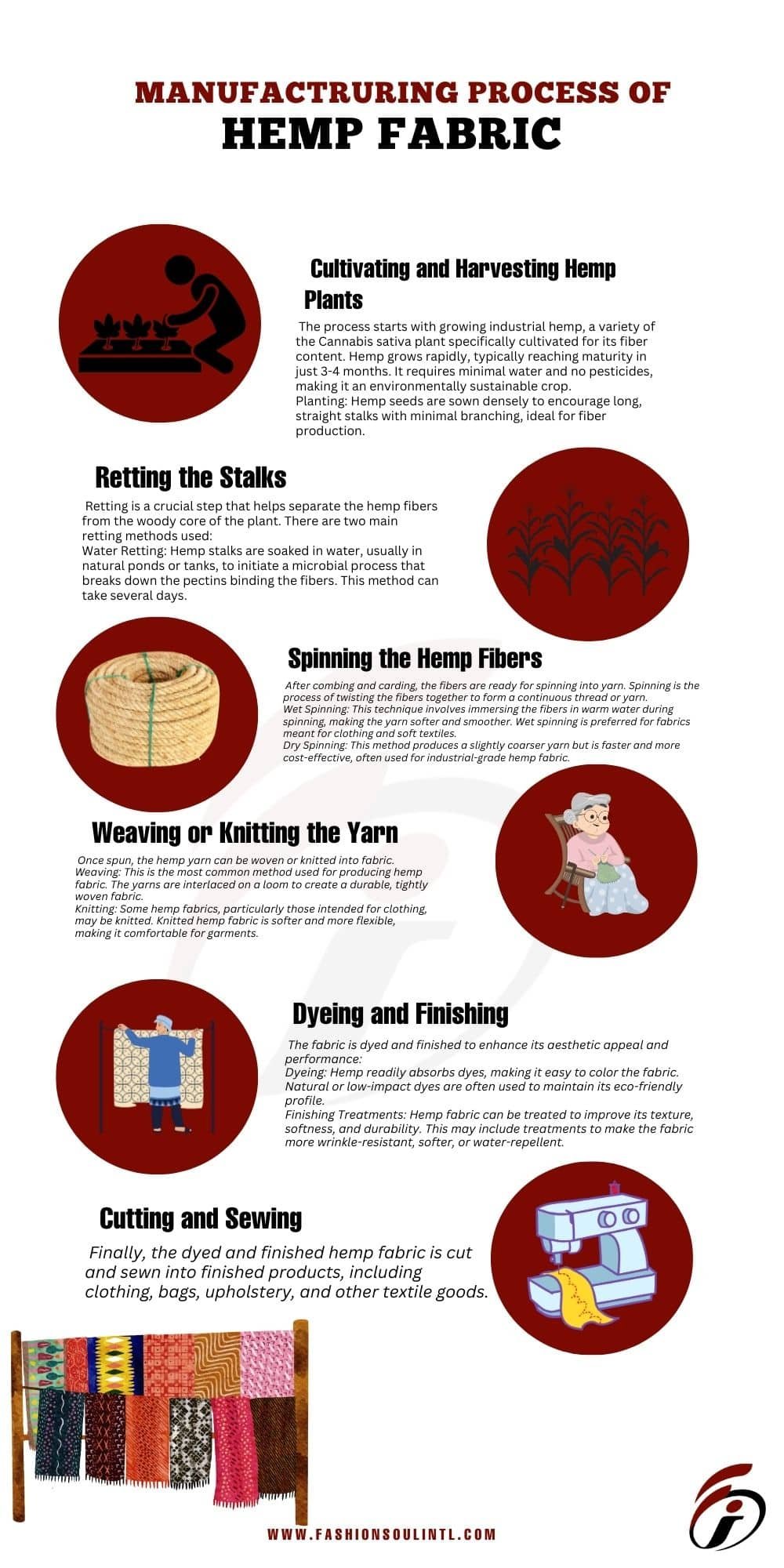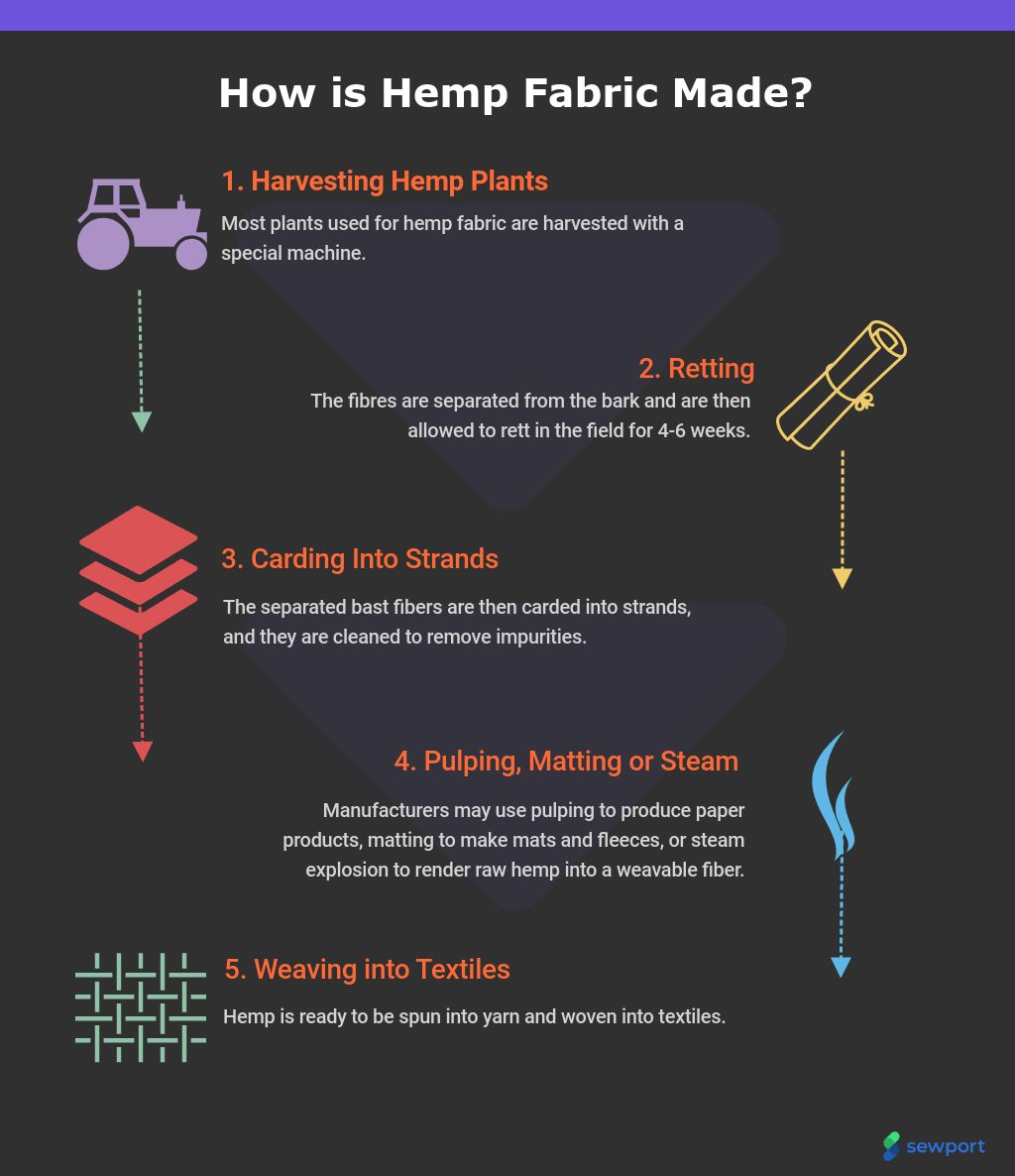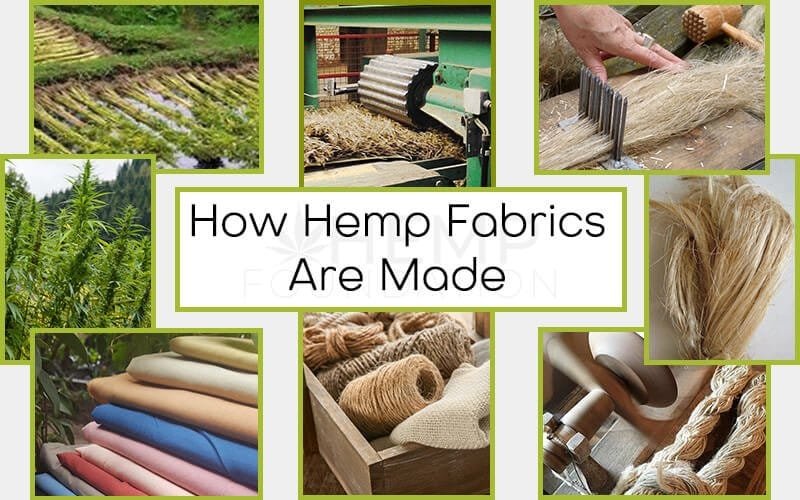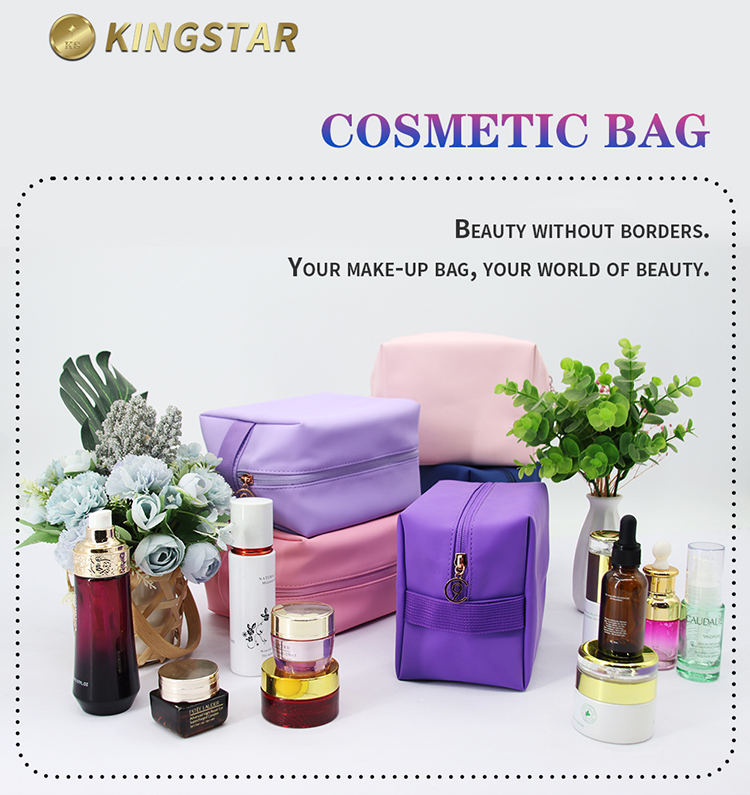Hemp fabric is a sustainable textile made from the stalks of the Cannabis sativa plant. It is known for its exceptional durability and minimal environmental impact.

This detailed examination covers the unique properties of hemp, from its natural cultivation to its final form as a versatile textile. You will learn about the intricate manufacturing process, the primary regions where it is grown, and how it compares to other common fabrics. Understanding these elements reveals why hemp is a leading material in sustainable fashion and beyond.

Table of Contents

- What Exactly is Hemp Fabric?
- How is Hemp Fabric Made? The Journey from Plant to Textile
- What are the Defining Properties of Hemp Textile?
- Why Choose Hemp? Key Benefits and Considerations
- Where is Hemp Sourced for Fabric Production?
- Hemp vs. Other Natural Fabrics: A Comparative Look
- The Future of Hemp in Fashion and Beyond
What Exactly is Hemp Fabric?
Hemp fabric, also known as hemp textile, is a natural material woven from the long bast fibers found in the stalk of the Cannabis sativa plant. It is one of the oldest and most versatile fabrics in human history, with evidence of its use dating back thousands of years. The fibers are known for their exceptional length, strength, and resilience, making the resulting textile remarkably durable.
A crucial distinction must be made between industrial hemp used for fabric and its cousin, marijuana. Both come from the Cannabis sativa species, but they are different cultivars. Industrial hemp is specifically bred to have extremely low levels (less than 0.3%) of tetrahydrocannabinol (THC), the psychoactive compound. Therefore, hemp fabric and the plants it comes from have no intoxicating properties. Instead, these plants are cultivated for their tall, sturdy stalks, which are rich in the fibers necessary for textile production.
How is Hemp Fabric Made? The Journey from Plant to Textile
The transformation of a hemp plant into a soft, wearable fabric is a fascinating and traditionally mechanical process. It involves several distinct stages that rely on natural decomposition and physical separation rather than harsh chemicals, further enhancing its sustainable credentials.
Step 1: Cultivation – Sowing the Seeds
The process begins with planting hemp seeds. Hemp is a highly efficient crop that grows densely, which helps to choke out weeds and reduces the need for herbicides. It thrives in a variety of climates and soil types, requiring significantly less water than crops like cotton. The plants grow quickly, typically reaching maturity in 70 to 110 days. For optimal fiber quality, the plants are sown closely together to encourage tall, slender stalks with minimal branching.
Step 2: Harvesting – The Crucial Cut
Once the plants mature, they are harvested. This is often done with specialized machinery that cuts the stalks near the base. After cutting, the stalks are left in the field in rows, a process called swathing. This exposes them to the elements to begin the next crucial phase.
Step 3: Retting – Naturally Separating Fibers
Retting is a vital process where moisture and microbes are used to break down the pectin and lignin that bind the fibrous outer part of the stalk (the bast) to the woody inner core (the hurd). Field retting, or dew retting, is the most common and eco-friendly method. The stalks are left in the field for several weeks, where the natural combination of dew, rain, and sunlight facilitates the decomposition. This natural process loosens the fibers for easy separation.
Step 4: Breaking & Scutching – Extracting the Bast Fibers
After retting, the dried stalks are processed through a breaker or decorticator. This machine uses fluted rollers to crush and break the woody hurd into small pieces, separating it from the long, flexible bast fibers. The subsequent step, scutching, involves beating the broken stalks to remove any remaining woody particles, further cleaning and separating the valuable fibers.
Step 5: Heckling – Combing and Refining
The raw fibers are then put through a process called heckling. This involves pulling the fibers through a series of combs with increasingly fine teeth. Heckling removes any final impurities, aligns the fibers into a continuous, flowing sliver, and separates the longer, higher-quality fibers (line fibers) from the shorter ones (tow). The line fibers are used for fine textiles, while the tow can be used for coarser yarns or other industrial applications.
Step 6: Spinning & Weaving – Creating the Final Material
Finally, the refined hemp slivers are spun into yarn or thread. This can be done using various spinning techniques to achieve different textures and strengths. Once the yarn is ready, it is woven or knitted into fabric. The resulting hemp textile has a texture often compared to linen, which softens beautifully with each wash and wear.
What are the Defining Properties of Hemp Textile?
Hemp fabric is prized for a unique combination of characteristics that make it suitable for a wide range of applications, from clothing to home furnishings. Its performance is rooted in the natural structure of the hemp fiber itself.
| Property | Description |
|---|---|
| Exceptional Durability | Hemp fibers are among the strongest and longest natural textile fibers. This results in a fabric that is highly resistant to abrasion and has a long lifespan, holding its shape well over time. |
| High Breathability | The porous nature of the fiber allows air to circulate freely, making hemp fabric cool and comfortable to wear in warm weather. It is also an effective insulator, providing warmth in cooler conditions. |
| Moisture-Wicking | Hemp can absorb significant moisture without feeling damp, drawing perspiration away from the body and releasing it into the air. This property helps keep the wearer dry and comfortable. |
| Naturally Antimicrobial | The material contains natural compounds that inhibit the growth of bacteria and mildew. This helps the fabric stay fresh longer and resist odors. |
| UV Resistant | Hemp fabric naturally filters ultraviolet light, offering protection from the sun’s harmful rays. |
| Softens Over Time | While new hemp fabric can have a crisp, linen-like feel, it becomes progressively softer and more supple with each wash, enhancing comfort without compromising durability. |
Why Choose Hemp? Key Benefits and Considerations
The rising popularity of hemp is driven by its compelling advantages for both the planet and the consumer. However, like any material, it has certain characteristics that are important to understand.
The Environmental Advantages
Hemp is widely regarded as one of the most sustainable crops for textile production. It grows rapidly and requires very little water, especially when compared to water-intensive crops like conventional cotton. Because it grows so densely, it naturally suppresses weeds, reducing or eliminating the need for chemical herbicides. Furthermore, hemp is a resilient plant that is naturally resistant to most pests, minimizing the necessity for pesticides. As it grows, it returns a significant portion of nutrients to the ground, improving soil health for future crops.
Performance and Durability for the User
For consumers, the primary benefit is longevity. Products made from hemp fabric are built to last. The strength of the fibers means they withstand repeated use and washing without breaking down. This makes it an excellent investment for clothing, bags, and upholstery. Its breathability and moisture-wicking properties also contribute to superior comfort, adapting well to different climates and activity levels.
Potential Drawbacks to Consider
Despite its many benefits, there are a few considerations. Pure hemp fabric can be prone to wrinkling, similar to linen. When new, it can feel coarser than cotton, though this texture lessens significantly with use. Additionally, due to a smaller-scale production infrastructure compared to cotton or synthetics, hemp fabric can sometimes be more expensive. However, its long lifespan can offset the initial cost over time.
Where is Hemp Sourced for Fabric Production?
Historically, hemp was cultivated globally, but modern production is concentrated in several key regions. The legality and industrial infrastructure for hemp cultivation play a significant role in determining where it is grown for fiber. Currently, China is the world’s largest producer of hemp fiber and textiles, having maintained a continuous industrial hemp industry for centuries.
Europe is another major hub, with countries like France, the Netherlands, and Romania leading production. European hemp is often cultivated for high-quality fiber used in specialty textiles and biocomposites. In North America, Canada has a well-established industrial hemp industry. The United States has also seen a significant resurgence in hemp farming following the passage of the 2018 Farm Bill, which legalized industrial hemp cultivation nationwide. This has spurred new growth and innovation in the domestic hemp textile market.
Hemp vs. Other Natural Fabrics: A Comparative Look
To fully appreciate hemp’s qualities, it is helpful to compare it directly with other popular natural fabrics. Each material offers a unique set of benefits and drawbacks related to its environmental impact and performance.
| Feature | Hemp | Conventional Cotton | Linen (Flax) |
|---|---|---|---|
| Water Usage | Very Low | Very High | Low |
| Pesticide Needs | Minimal to None | High | Low |
| Durability | Extremely High | Moderate | High |
| Soil Impact | Improves Soil Health | Depletes Soil Nutrients | Can be grown in poor soil |
| Feel/Texture | Crisp, softens with wear | Soft from the start | Crisp, softens with wear |
| Cost | Moderate to High | Low to Moderate | Moderate to High |
The Future of Hemp in Fashion and Beyond
As consumers and manufacturers increasingly prioritize sustainability, the demand for materials like hemp is set to grow. Its combination of environmental benefits and high-performance characteristics makes it an ideal choice for the future of textiles. Innovations in processing are leading to even softer and more versatile hemp blends, expanding its applications in clothing, accessories, and home goods.
The ethos behind choosing hemp aligns with a broader movement toward conscious consumerism. Much like the appeal of full-grain leather goods that gain character over time, hemp offers a similar promise of longevity and mindful consumption. At Beldtura Leather, we champion materials that are built to last, and hemp’s resurgence in high-quality goods reflects a shared commitment to durability and timeless style. This ancient fiber is not just a relic of the past; it is a key component in building a more responsible and resilient future for the products we use every day.

